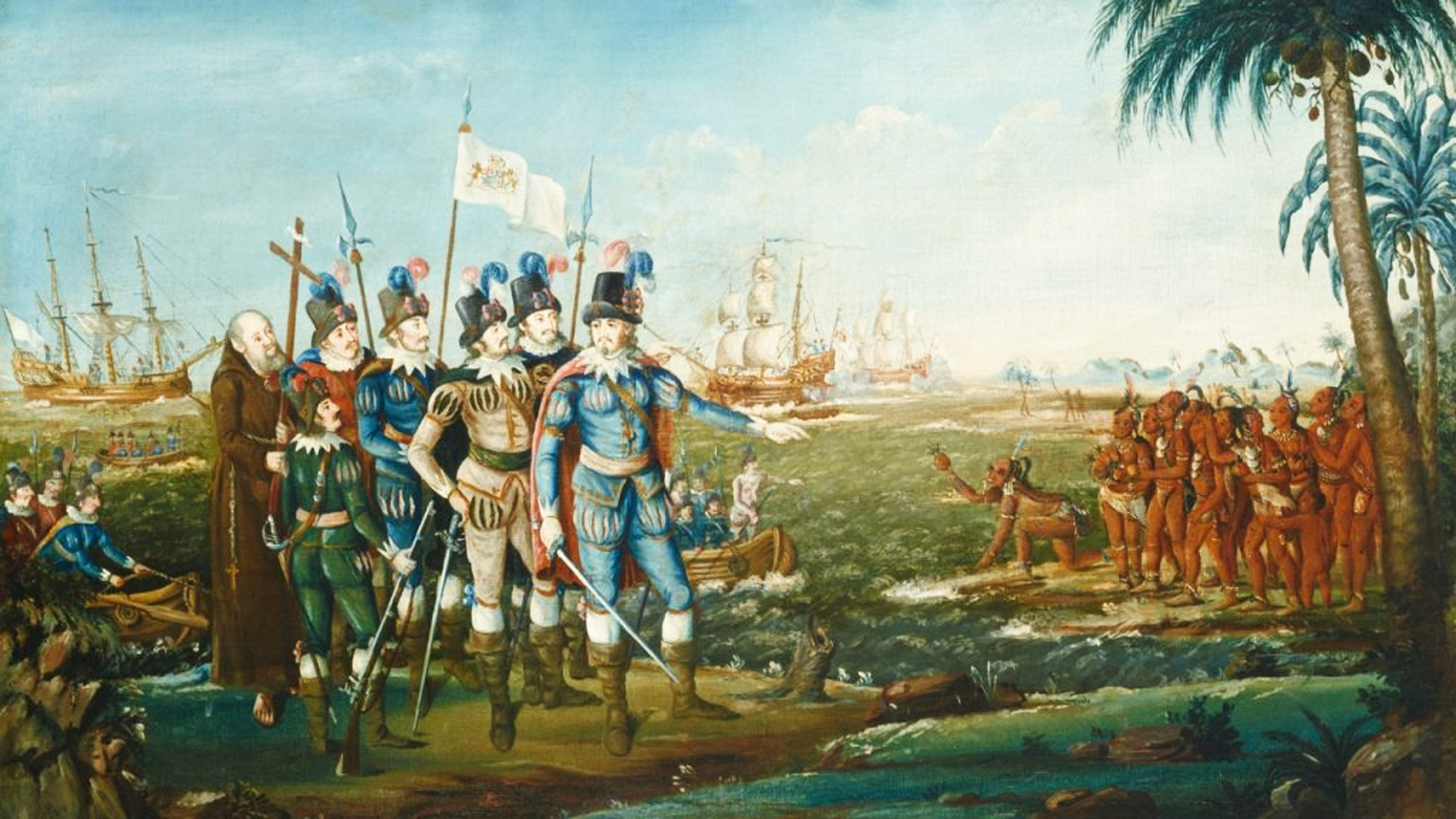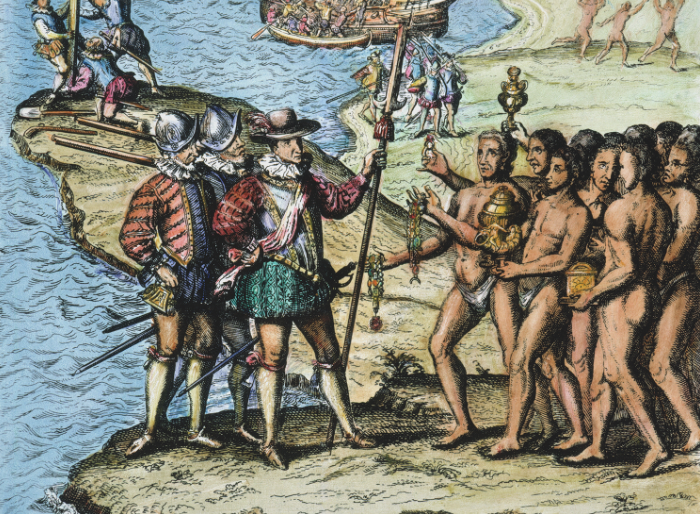Columbus Reaches the 'New World'

On October 12, 1492, after more than two months at sea, Christopher Columbus and his crew sighted land in the Bahamas.
What Happened?
In the late 1400s, European nations were eager to find faster trade routes to Asia’s riches—its gold, spices, and silk. Italian explorer Christopher Columbus believed he could reach Asia by sailing west across the Atlantic Ocean. Backed by Spain’s King Ferdinand and Queen Isabella, he set sail in August 1492 with three small ships: the Niña, the Pinta, and the Santa María.
After a long and dangerous voyage, Columbus’s crew spotted land on October 12, 1492. The island was known to its people, the Lucayans, as Guanahani, but Columbus renamed it San Salvador. He believed he had reached islands near India—hence his use of the word 'Indians' to describe the people he met. In truth, he had reached the Caribbean, a place unknown to Europeans but home to thriving Indigenous civilizations.
The Lucayans, part of the larger Taíno culture, welcomed Columbus and his men peacefully. They lived in organized communities, spoke their own languages, and traded goods across the islands. Columbus, however, saw their generosity as weakness. In his letters, he described them as 'timid' and 'guileless,' and suggested they would make good servants who could be converted to Christianity.
In the months that followed, Columbus explored other islands, including Cuba and Hispaniola (modern-day Haiti and the Dominican Republic). He established a small settlement called La Navidad and left 39 men behind. When he returned to Spain in 1493, he was celebrated as a hero who had found a 'New World,' even though he still believed he was near Asia.
Columbus made three more voyages to the Americas, but he never found the riches of Asia that he sought. Instead, his expeditions marked the beginning of European colonization. The Spanish claimed vast territories, enslaved Indigenous peoples, and brought diseases like smallpox that devastated native populations. Within decades, millions of Indigenous people in the Caribbean and the Americas were killed by violence, forced labor, and disease.
For centuries, Columbus was celebrated as a daring explorer who 'discovered America.' But in truth, he did not discover a new world—he invaded one that was already thriving. The Lucayans, Taíno, and countless other Indigenous peoples had rich cultures, governments, and trade networks long before Columbus’s ships arrived.
Modern historians and Indigenous communities now recognize that October 12 marks not just a voyage of exploration, but also the beginning of colonization and cultural destruction. That is why many people in the United States and Latin America have replaced Columbus Day with Indigenous Peoples’ Day—to honor the original inhabitants of the Americas and their enduring resilience.
History is complex: Columbus’s voyage changed the course of human history, connecting continents and reshaping the world. But it also reminds us that progress often comes at a human cost—and that telling the full story means recognizing both the achievements and the harm that followed.
Why It Matters
Columbus’s landing in 1492 connected Europe and the Americas for the first time, setting the stage for global trade, cultural exchange, and empire building. Yet it also began centuries of Indigenous displacement, enslavement, and disease. Understanding this event helps us see how exploration can bring both discovery and destruction—and why historical truth must include all voices, especially those that were silenced.
?
What motivated Columbus to sail west, and what did he hope to find?
How did Columbus’s voyage change life for both Europeans and Indigenous peoples?
Why did Columbus believe he had reached Asia, and what mistakes did he make?
Why do some people celebrate Indigenous Peoples’ Day instead of Columbus Day?
How can learning the full story of 1492 help us think critically about exploration and colonization?
Dig Deeper
Learn how Columbus Day became a U.S. holiday and why its meaning continues to evolve.
Was Columbus a heroic explorer or a ruthless conqueror? This video examines both sides of his legacy.
A look at how Columbus’s myth grew—and how Indigenous voices are reshaping the holiday today.
Related

European Exploration of the Americas
When European explorers set sail across the Atlantic, they weren’t just chasing trade routes—they were rewriting the world’s future. But discovery for some meant devastation for others.

The Columbian Exchange: When Worlds Collided
When two previously isolated worlds collided in 1492, the resulting biological, cultural, and economic transformation reshaped every corner of the globe. The Columbian Exchange was not just a swap—it was a world-changing, world-breaking chain reaction.

Joint-Stock Companies: Capitalism, Colonization, and Risk
Without joint-stock companies, there might be no Jamestown, no thirteen colonies—and no United States. These early capitalist ventures let investors fund risky New World settlements without bankrupting the Crown.
Further Reading
Stay curious!
